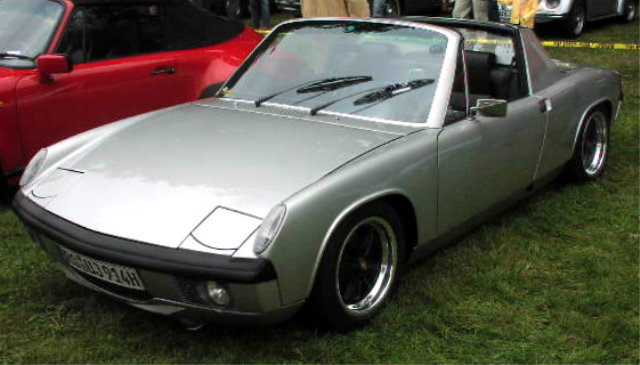There were no works 911 variants at Le Mans in 1980. In keeping with the company's move away from the 911*, Porsche entered three works 924 Carrera GTRs into the GTP class, as the first move to make the 924 the Le Mans winning successor to the 934/935 within three or four years. Although down on power (320bhp) against other entrants, the three 924 Carrera GTs acquitted themselves well, finishing 6th, 12th, and 13th due to reliability, and excellent handling at a wet Le Mans.
In 1981 Porsche entered a 924 Carrera GTP and a 944 LM, which used the new 2.5l engine later used in the 924S and 944. In 1982 924s were entered only by privateers, including two cars entered by BF Goodrich using road tyres. The 924 won the IMSA GTO class in 1981 and the IMSA GT class in 1982, but overall never bettered the Porsche works results, despite the customer cars having more power than the original works cars. After 1980 Porsche focused on mid-engined cars for the new Group C regulations for 1982, dominating the class and ending factory development of the 924 Carrera GTR.
The 924 Carrera GTRs used the standard 924 block, (931) cylinder head, crankshaft, and con-rods. The turbo and intercooler were much larger and moved to the inlet side and front of the engine bay respectively. An aluminium torque tube and titanium drive shafts lightened the drive train components. A 935-based gearbox was used.
*Paraphrased from Paul Frere's excellent book, "Porsche 911 Story"
At the end of 1980, Professor Ernst Fuhrmann (who had been in charge of Porsche's activities since the end of 1972) resigned from his office one year before his contract expired...Fuhrmann, under whose leadership the Porsche 924, 944, and 928 had been developed, was much more inclined to push these cars than the 911...But Dr Ferry Porsche, who had been the real "father" of the 911, had different views...Professor Fuhrmann's policy had led to a considerable reduction of the 911 development programme, but as soon as Peter Schutz took office [to Managing Director], in January 1981, the decision was taken to reactivate the development of the model".
1980-1982 924 Carrera GTR Le Mans results:
| Year | Team | No. | Result | Drivers | Class | Links |
| 1980 | Porsche System | 4 | 6th | Manfred Schurti, Jurgen Barth | GTP | |
| Porsche System | 2 | 12th | Tony Dron, Andy Rouse | GTP | ||
| Porsche System | 3 | 13th | Derek Bell, Al Holbert | GTP | ||
| | ||||||
| 1981 | Porsche System | 1 | 7th | Jurgen Barth, Walter Rohrl | GTP | |
| Porsche System | 36 | 11th (class win) | Manfred Schurti, Andy Rouse | IMSA GTO | ||
| Eminence Racing | 73 | 51st (DNF) | Jean-Marie Almeras, Jacques Almeras | Group 4 | ||
| Porsche Australia | 74 | DNQ | Colin Bond, Peter Brock | Group 4 | ||
| Canon / GTI | 75 | DNQ | Richard Lloyd, Andy Rouse | Group 4 | ||
| | ||||||
| 1982 | BF Goodrich | 86 | 16th (class win) | Jim Busby, Doc Bundy, Marcel Mignot | IMSA GT | Video |
| BF Goodrich | 87 | DNF | Paul Miller, Pat Bedard, Manfred Schurti | IMSA GT | Video | |
| Canon / GTI | 84 | DNF | Richard Lloyd, Andy Rouse | IMSA GT | Wiki |
Le Mans photo acknowledgements and thanks to: Paul Kooyman, Jean-Philippe Legrand, Alain Jourdainne and Francois-Rene Alexandre at photos24hlemans.free.fr


















